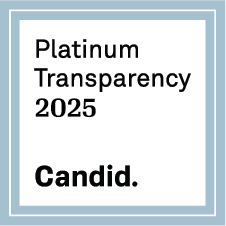Backlogs in Family-Based Immigration: Shedding Light on the Numbers
Last Updated
Topics
You are interviewing a new LPR client and advising him to file an I-130 petition for his unmarried daughter. You come to the part of the interview where you need to tell him how long it will take after you file the petition in the F-2B category before you can start the second stage—filing for permanent residence. The easiest thing to do is pull out the most recent Visa Bulletin and make an informed guess. However, is that the best you can do?
Every year the Department of State (DOS) releases a report on the number of immigrant visa applicants who are waiting for their priority dates to become current so they can consular process. The most recent report is available here. It is helpful to see just how many people are waiting in line, and how long they have been waiting, to gauge how long the backlogs are in each family-based preference category and for each country.
One cannot obtain this information by looking at the most current Visa Bulletin. For example, the February 2019 Visa Bulletin indicates that those applicants from Mexico whose priority date is before February 8, 1998 in the F-4 category are “current” using Chart A and can be scheduled for a consular interview. Does that mean U.S. citizens filing an I-130 today for their Mexican sibling can expect to consular process in 21 years? What if it is more likely that they will have to wait 50 years? 75 years? Would that change the advice you give these clients?
Most practitioners, especially those starting out, assume that the Visa Bulletin moves forward with at least some regularity, month by month. They may realize that while there are periods of visa retrogression, they assume that demand for visas over time evens out. Therefore, when they see that persons who filed a petition 20 years ago are now being scheduled for their visa interviews, they interpret that as a 20-year backlog.
Experienced practitioners know better, and they realize that it is impossible to predict visa availability with any certainty. After all, the Visa Bulletin moves both forward and backward based on demand in the various categories. And the system for allocating visas and determining when a priority date will become current is very complex and subject to factors beyond their control and knowledge.
But even practitioners who understand that the Visa Bulletin is not an accurate gauge of when a priority date will become current are not giving accurate assessments to their clients. It is not enough to play it safe and not make any predictions. There is a big difference between waiting 20 years and waiting 50 or 75 years to consular process, and clients need to know the reality. As a practitioner, you should be advising them of their chances of ever immigrating—absent some legislative change—so they can make an informed decision.
State Department visa allocation is not a mystery, nor is predicting demand for visas in a particular category. We can actually see with some precision the backlog in each family-based category for each country and can predict with at least some degree of accuracy when that category will become current for a petition filed today. In order to estimate when the priority date will become current, however, one must look at both DOS and U.S. Citizenship and Immigration Services (USCIS) annual reports, since each agency maintains separate numbers on immigrant visa or adjustment of status applications, respectively, that are approved. The numbers contained in the DOS report, therefore, only indicate I-130 petitions that have been approved and forwarded to the National Visa Center and not applications for adjustment of status that are processed by the USCIS.
Congress has placed a limit on the number of foreign-born individuals who are admitted to the United States annually as family-based immigrants. INA § 201(c)(1)(A)(i). A formula that imposes a cap on every family-based immigration category, with the exception of “immediate relatives” (spouses, minor unmarried children, and parents of U.S. citizens), governs family-based immigration. The formula allows unused employment-based immigration visas in one year to be dedicated to family-based immigration the following year, and unused family-based immigration visas in one year to be added to the cap the next year. This formula means that there are slight variations from year to year in family-based immigration. Because of the numerical cap, there are long waiting periods to obtain a visa in most of the family-based preference categories.
The DHS 2017 Yearbook of Immigration Statistics indicates that a total of 748,746 people were granted lawful permanent resident (LPR) status based on a family petition: 516,508 immediate relatives and 232,238 in the preference categories. Approximately half of the immediate relatives adjusted status while the other half consular processed. But of the 232,328 who became LPRs in one of the preference categories, the overwhelming majority (218,760) consular processed and only a relative few (13,478, or 6 percent) adjusted status.
The most recent DOS Annual Report of Immigrant Visa Applicants confirms this ratio for the 2018 fiscal year. For example, last year the consulates issued 211,641 family-based preference-category immigrant visas while the USCIS issued 12,449 adjustment of status approvals in those categories, or 5.5 percent of the total.
The following are the number of visas available in each of the four family-based preference categories for the 2019 fiscal year:
- First preference (unmarried sons and daughters of U.S. citizen)—23,400 visas per year, plus any visas left over from the fourth preference, with a per-country limit of 7 percent (1,638 visas)
- Second preference (F-2A) (spouses and minor children of LPR)—87,934 visas per year, plus any visas left over from the first preference, with basically no per-country limit
- Second preference (F-2B) (unmarried adult children of LPR)—26,266 visas per year, plus any visas left over from the first preference, with a per-country limit of 7 percent (1,841 visas)
- Third preference (married adult children of U.S. citizen)—23,400 visas per year, plus any visas left over from the first and second preferences, with a per-country limit of 7 percent (1,638 visas), and
- Fourth preference (brothers and sisters of U.S. citizen over 21)—65,000 visas/year, plus any visas left over from the previous preferences, with a per-country limit of 7 percent (4,555 visas). INA §§ 203(a)(1)–(a)(4).
As we all know, to determine whether a visa applicant in a family-based preference category is “current,” one must compare the priority date with the date listed in Chart A, Final Action Dates for Family-Sponsored Preference Cases, in the monthly Visa Bulletin. The priority date is the official date that the USCIS has determined the petition was filed. In order to be current, the priority date must precede the date on the Visa Bulletin that corresponds to the preference category and country of nationality. DOS uses Chart B, Dates for Filing Family-Sponsored Visa Applications, to determine when to begin the process of requesting fee payments and submission of forms and documents; the USCIS also uses Chart B on a month-by-month basis to allow eligible persons to apply for adjustment of status.
The State Department determines visa availability based on statutory limits for each preference category, per country caps, and current, past, and estimated demand. Applicants compete for visas primarily on a worldwide basis, and each country is subject to a 7 percent limit on the number of visas that are available in each preference category. The per-country limitation serves to avoid monopolization of the annual limitation by applicants from only a few countries. This per-country cap does not apply, of course, to immediate relatives.
Nor does the per-country cap apply now to most spouses and unmarried children of LPRs in the second preference category due to the addition of visas in the FX classification. One portion of the numbers provided to the second preference category (F-2A, 21,984 visas) is subject to the per-country cap, while the others (FX, 65,900 visas) are exempt. That explains why all countries share the same cut-off date in the F-2A category in Chart B, and almost the same date in Chart A (Mexico is two weeks behind the other countries due to increased demand). In contrast, for the F-2B category, there is an annual limit of only 26,266 visas that can be used in any fiscal year, as well as a per-country limit of 7 percent of this number. Mexico and the Philippines are backlogged much farther than the other countries due to increased demand and the limited number of visas that are available.
It is impossible to gauge future visa availability by looking only at the Visa Bulletin for a specific month, because one must take into account the current backlog in each category. That is where the DOS Annual Report of Immigrant Visa Applicants comes into play, as well as a history of visa advancement in that particular category. By looking at the annual report, we can determine the number of people worldwide waiting to immigrate in each preference category, as well as the number of people waiting in each preference category in the four oversubscribed countries: India, China, Mexico and Philippines. With this information, we can have a more accurate picture of the real wait for a current priority date.
For example, let us return to your LPR client filing an I-130 petition for his daughter in the F-2B category. If you looked only at the Visa Bulletin for February 2019 you would see that petitions in the F-2B category for countries other than Mexico and the Philippines are current in Chart A if they were filed before May 1, 2012. But the six-year and nine-month difference between that date and February 1, 2019 does not mean that petitions in the F-2B category filed today will become current in six years and nine months.
How would you calculate the F-2B wait for beneficiaries from the non-oversubscribed countries? You would look at the 2018 DOS report and see that the number of pending F-2B applicants worldwide is 324,231. There are only 26,266 visas available each year in the F-2B category and there are three oversubscribed countries – Mexico, Dominican Republic, and the Philippines – that are at or above the 7 percent per-country (1,838 visas) cap. The number of approved petitions in the F-2B category from the three oversubscribed countries total 221,613. With this information, we can make the following calculations:
- Number of pending F-2B applicants from non-oversubscribed countries = 102,618 (324,231 – 221,613)
- Number of F-2B visas available to oversubscribed countries = 5,514 (3 x 1,838)
- Number of F-2B visas available to non-oversubscribed countries = 20,752 (26,266 – 5,514)
- Estimated time to have a current priority date for F-2B from non-oversubscribed country = 5 years (102,618 ÷ 20,752).
In other words, an F-2B applicant from a non-oversubscribed country who filed a petition today is likely to become current in February 2024 or perhaps a little later. This approximation does not take into consideration the number of adjustment of status applications that the USCIS will approve each year and that will reduce the number of immigrant visas available in the family preference categories. But we can assume that the numbers will not be reduced more than 5 to 6 percent. In addition, some F-2B visa applicants during that period will die, marry, withdraw their applications, or convert to a more advantageous category. This decrease, however, will be offset to some extent by the number of children born to these applicants, who will be added to that backlog as after-acquired derivative beneficiaries.
What if your LPR client who wants to petition for his daughter is from Mexico? If you looked only at the February 2019 Visa Bulletin, you would see that petitions filed prior to July 22, 1997 are now current in Chart A for Mexicans in the F-2B category. However, does that mean that those petitions filed today will be current in 22 years? In fact, the anticipated delays in those categories are quite a bit longer, and that is due to the increased demand by Mexicans.
The calculation of the likely waiting period for oversubscribed countries is the same as for non- oversubscribed. The number of F-2B visas available each year for Mexico is 1,841. The number of pending F-2B applicants from Mexico as of November 1, 2018 is 139,673. The length of time it will take to clear up the current backlog is approximately 76 years (139,673 ÷ 1,841). In other words, a Mexican who files a petition today for his or her unmarried son or daughter in the F-2B category can expect that person to become current in 2095. That is why the proper answer to your client’s question on when the visa will become available is “probably never.” You could be off by a few years, or even a few decades, but the answer would still be the same.
Do not overlook the fact that if the LPR petitioner naturalizes, the unmarried son or daughter would convert to the F-1 category and possibly immigrate faster. However, by applying the same formula and using current DOS numbers, one realizes that the first preference is backlogged almost as far as the F-2B for Mexicans (August 1, 1997 vs. July 22, 1997). For practical reasons, it makes little difference if the petitioner naturalizes. But an applicant from a non-oversubscribed country can actually expect to wait longer if the petitioner naturalizes: approximately 6 years (118,624 ÷ 20,124) in the F-1 category instead of 5 years in the F-2B. You would assume this news would serve to discourage LPR petitioners from naturalizing, since doing so lengthens the waiting time for the child beneficiary. However, the Child Status Protection Act neutralizes that negative effect by allowing the son or daughter to opt out of this automatic conversion to the first preference. Bottom line: there is little benefit in the petitioner’s naturalizing if the sole purpose is the child’s converting to a better category. Of course, naturalization brings with it many other rights and benefits independent of family-based immigration.
The Visa Bulletin for February 1994 indicated that Mexicans immigrating in the F-1 category were current if their priority date was before January 22, 1993. Today, that date has moved up to August 1, 1997. That means the category has progressed only 4 years and 6 months during the last 25 years, or an average of 2 months/year. It has to progress another 22 years in the Visa Bulletin to become current, which at this rate would happen in about 122 years [22 ÷ (4.5 ÷ 25)]. If, instead, we base our estimate on the backlog numbers for Mexicans filing in the F-1 category, they can expect to wait approximately 64 years to become current (104,251 ÷ 1,638). So we can estimate that the wait time for the unmarried Mexican sons and daughters of U.S. citizens or LPRs is somewhere between 64 and 122 years. Even if we use the lower number, it will be rare for the petitioner to be alive when the son or daughter immigrates, and that assumes that the beneficiary remains unmarried.
In that same example, the son or daughter were to marry, that would automatically convert the petition to the third preference and make matters decidedly worse. While the Visa Bulletin for February 2019 indicates only a 19-month difference between the F-1 and the F-3 category for Mexico, don’t be deceived. Upon knowing the current demand for visas from Mexico (205,277) and the per-country limit (1,638), and applying the formula, you would realize that waiting time for Mexicans in the F-3 category is 125 years (205,277 ÷ 1,638). By applying that same analysis, you would also realize that the F-4 category—siblings of U.S. citizens—is backlogged approximately 160 years for Mexicans (727,289 ÷ 4,555). If you knew that, would you still encourage your client to file the petition?
Every practitioner should consult the most recent DOS Annual Report of Immigrant Visa Applicants to determine current backlogs for each country in each category. Then perform the mathematical computation using the formula set forth in this article to arrive at a realistic understanding of how long a client will have to wait before the priority date of a petition filed today will become current. Clients deserve to know how long they can expect to wait before a visa is available in their preference category. While such information may discourage some clients from proceeding with their petitions, it will allow you to practice immigration law with the proper measure of insight and integrity. After the State Department released these reports, it let the genie out of the box. Continuing to claim ignorance or refusing to predict visa availability should no longer be an acceptable practice.





